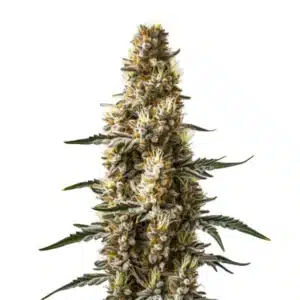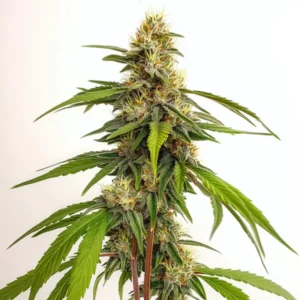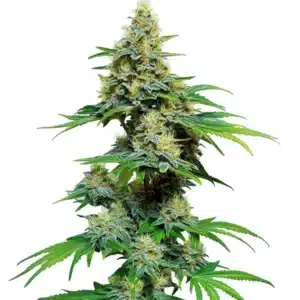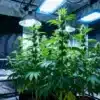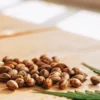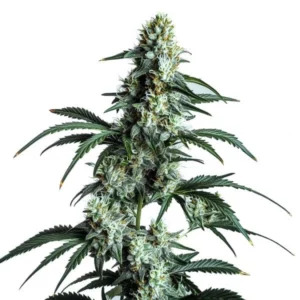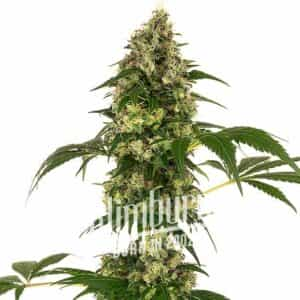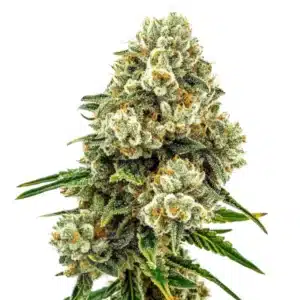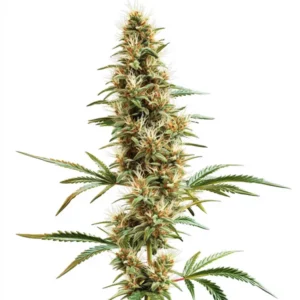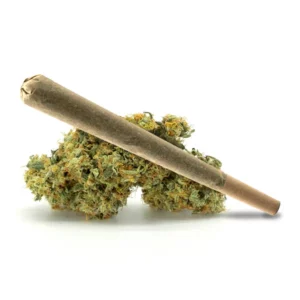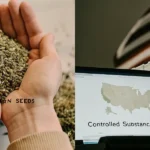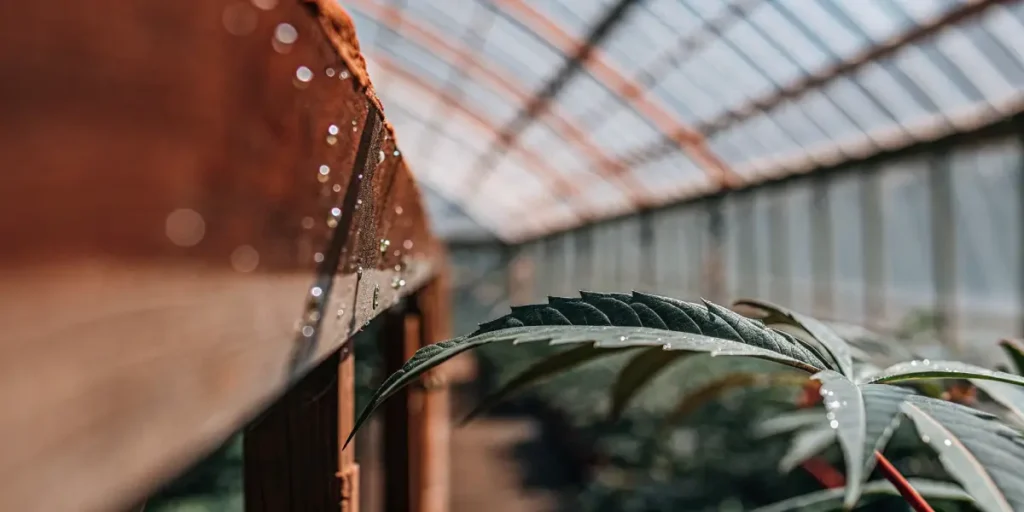
What are Reactive Oxygen Species in Cannabis?
Reactive oxygen species (ROS) in cannabis are like the double-edged sword of plant biology. These molecules, which include free radicals, can be both beneficial and harmful. For the first-time cannabis grower, it might sound complex, but ROS are just molecules in plants that contain oxygen and are highly reactive. They play crucial roles in plant development, stress responses, and even in the aging of plants.
In the world of cannabis cultivation, knowing certain reactive compounds in cannabis can boost your growing game. These compounds are naturally formed in plants during various metabolic processes, such as photosynthesis and respiration. When managed well, they help in signaling processes that fortify plants against environmental stress. However, excessive levels can cause damage to plant cells, affecting growth and quality.
Recommended Strains
Blue Dream
|
|
THC | 17% - 24% (Medium) |
|
|
Type | Feminized |
|
|
Yield | High |
|
|
Phenotype | 50% Indica / 50% Sativa |
GG4
|
|
THC | 27% (High) |
|
|
Type | Feminized |
|
|
Yield | High |
|
|
Phenotype | 40% Indica / 60% Sativa |
Their role in cannabis plants is intricate. They can act as signaling molecules that help in adapting to stress. For instance, when your plants are exposed to high light intensity or drought, these compounds increase to trigger defense mechanisms. But be cautious too much can lead to oxidative stress, which is harmful to your plants.
Impact of Reactive Oxygen Species on Cannabis Growth
The impact of reactive oxygen species on cannabis growth can be significant. When in balance, ROS contribute to robust plant growth by regulating processes like cell division and elongation. They help in the synthesis of plant hormones that are essential for growth and development. This makes ROS indispensable for achieving healthy and vigorous cannabis plants.
On the flip side, an overproduction of ROS can lead to oxidative damage. This is when the plant’s antioxidant defenses are overwhelmed, leading to cell damage. Symptoms include leaf discoloration, wilting, and stunted growth. To manage this, growers often use antioxidants or adjust environmental factors such as light and humidity to keep ROS levels in check.
Furthermore, knowing the impact of ROS on cannabis growth allows cultivators to develop better cultivation techniques. By monitoring ROS levels, growers can make informed decisions on how to adjust environmental conditions to promote optimal growth. This proactive approach not only enhances the plant’s resistance to stress but also improves overall crop yield and quality.
As growers become more adept at managing ROS in cannabis cultivation, they can cultivate more resilient plants. These plants are better equipped to withstand environmental challenges, ensuring consistency in growth and quality. The knowledge of ROS dynamics thus becomes a valuable tool in the arsenal of cannabis cultivation techniques.
Reactive Oxygen Species Effects on Cannabis Terpene Production
Terpenes are the aromatic compounds in cannabis that give each strain its unique scent and flavor. The reactive oxygen species effects on cannabis terpene production are quite fascinating. ROS can influence the pathways that lead to terpene biosynthesis, often enhancing the production of these aromatic compounds.
In controlled amounts, ROS might boost the plant’s stress response, resulting in a richer terpene profile. For example, a strain like Blue Dream may exhibit a more intense aroma when grown under conditions where ROS are carefully managed. However, excessive ROS can degrade terpenes, leading to a loss of flavor and aroma.
The interplay between ROS and terpene production underscores the importance of precise environmental control in cannabis cultivation. By strategically managing factors such as light intensity and nutrient availability, growers can optimize the reactive oxygen species effects on cannabis terpene production. This not only enhances the sensory qualities of the cannabis but also increases its market value.
Moreover, knowing how reactive oxygen species affect cannabis quality can be a game-changer for cultivators seeking to produce premium-grade cannabis. By leveraging ROS to fine-tune terpene profiles, growers can create distinctive and highly sought-after strains. This approach not only caters to consumer preferences but also sets a higher standard for cannabis cultivation practices.
Promos & Deals
Managing Reactive Oxygen Species in Cannabis Cultivation
Managing reactive oxygen species in cannabis cultivation is key to maintaining plant health and maximizing yield. Growers can employ several strategies to keep ROS levels in check. One effective method is by optimizing light exposure. Using grow lights that mimic natural sunlight can help maintain proper ROS levels and reduce oxidative stress.
Another approach is through the use of antioxidants. These compounds can neutralize excessive ROS, protecting the plant from potential damage. Antioxidants can be found in certain fertilizers or applied as foliar sprays. Additionally, ensuring that your plants have adequate water and nutrients can bolster their natural antioxidant defenses.
Integrating advanced monitoring systems can further enhance the management of reactive oxygen species in cannabis cultivation. These systems allow for real-time tracking of ROS levels, enabling growers to make timely adjustments to environmental conditions or nutrient application. Such proactive management ensures consistent plant health and optimal growth conditions.
Moreover, education and training on the reactive oxygen species role in cannabis plants can empower growers to innovate and experiment with new cultivation techniques. By knowing the nuances of ROS management, cultivators can explore novel methods to boost plant resilience and productivity, setting new benchmarks in the field of cannabis cultivation.
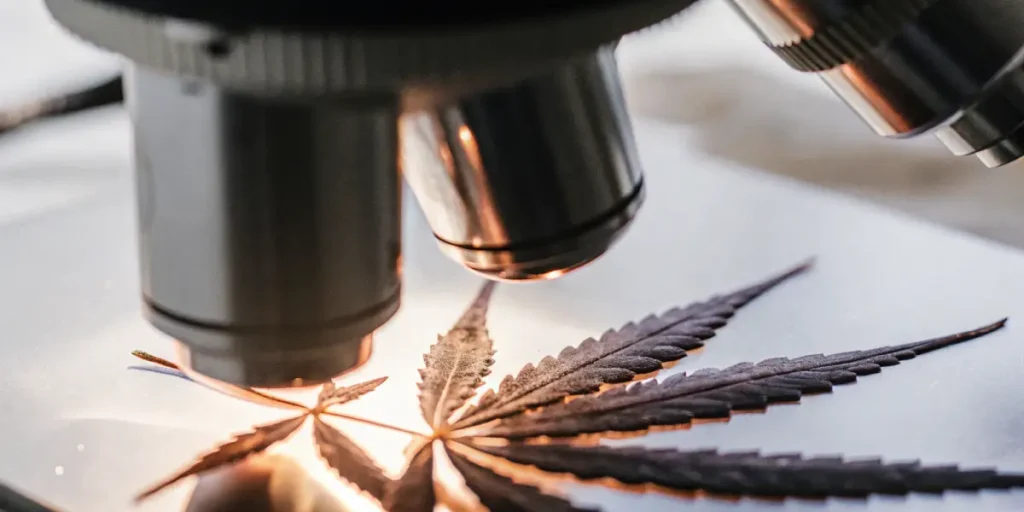
Choosing Cannabis Strains for Better Management
Some cannabis strains are naturally more resilient to oxidative stress. For instance, Gorilla Glue 4 is known for its robust growth and stress tolerance, making it a great choice for managing ROS. These strains often have genetic traits that enhance their ability to cope with higher ROS levels.
Another strain that performs well under stress is Sour Diesel. This strain’s ability to thrive in challenging conditions makes it ideal for growers looking to experiment with different stress management techniques. Its natural resilience can reduce the need for excessive intervention, allowing growers to focus on other aspects of cultivation.
When selecting strains for cultivation, considering the reactive oxygen species effects on cannabis terpene production can also guide decisions. Strains that are known for their aromatic profiles may benefit from controlled ROS exposure, enhancing their terpene content and overall appeal. This strategic selection process can lead to superior quality harvests.
Furthermore, knowing how reactive oxygen species affect cannabis quality can assist growers in choosing strains that align with their cultivation goals. Whether the aim is to produce aromatic, flavorful buds or to maximize yield under stress conditions, selecting the right strains plays a crucial role in achieving desired outcomes in cannabis cultivation.
FAQs
What are reactive oxygen species in cannabis?
Reactive oxygen species in cannabis are molecules that are highly reactive due to the presence of oxygen. They are naturally produced during processes like photosynthesis and respiration. While they play important roles in plant development and stress response, excessive ROS can damage plant cells.
Managing ROS levels is crucial for healthy cannabis growth. Balanced ROS levels contribute to robust growth and enhanced terpene production, while excessive levels can lead to oxidative stress, affecting plant health and quality.
Knowing what are reactive oxygen species in cannabis helps growers make informed decisions on cultivation practices. By maintaining optimal ROS levels, growers can enhance both the growth dynamics and the aromatic quality of the cannabis, thus ensuring a high-quality yield.
Moreover, delving deeper into the reactive oxygen species role in cannabis plants can offer insights into developing more resilient strains. This knowledge can aid in breeding programs aimed at producing cannabis varieties with enhanced stress tolerance and superior growth characteristics.
How do reactive oxygen species affect cannabis quality?
ROS can significantly impact cannabis quality. In moderation, they enhance terpene production, leading to more aromatic and flavorful buds. This is because ROS are involved in the pathways that synthesize these aromatic compounds.
However, when ROS levels are too high, they can degrade terpenes and other essential compounds. This results in a loss of flavor and aroma, ultimately reducing the quality of the cannabis. Proper management of ROS is essential to maintain high-quality yields.
Recognizing how reactive oxygen species affect cannabis quality is essential for growers aiming to produce premium-grade products. By knowing the balance required, cultivators can manipulate environmental factors to promote terpene synthesis while preventing degradation.
Furthermore, proactive strategies in managing reactive oxygen species in cannabis cultivation can elevate the overall standard of the crop. This involves not only controlling ROS levels but also enhancing the plant’s natural defense mechanisms through targeted interventions, ensuring superior quality cannabis.
What is the reactive oxygen species role in cannabis plants?
The function of reactive oxygen species in cannabis plants is multifaceted. They act as signaling molecules that help the plant respond to environmental stressors like drought or intense light. This makes them crucial for the plant’s adaptive responses.
Additionally, ROS are involved in regulating growth processes such as cell division and hormone synthesis. When balanced, they contribute to healthy plant development, making them an integral part of cannabis cultivation.
The knowing of the reactive oxygen species role in cannabis plants is pivotal for optimizing growth conditions. By leveraging ROS as signaling agents, growers can enhance the plant’s innate ability to cope with stress, thereby improving resilience and productivity.
Moreover, insights into ROS dynamics can inform breeding strategies aimed at developing new strains with enhanced stress tolerance. This knowledge can lead to innovations in cannabis cultivation, resulting in plants that thrive under a variety of environmental conditions.
How can I manage reactive oxygen species in my cannabis grow?
Managing ROS in cannabis cultivation involves several strategies. Optimizing light exposure and using antioxidants are effective methods. Grow lights that mimic natural sunlight can help maintain proper ROS levels.
Incorporating antioxidants through fertilizers or foliar sprays can neutralize excess ROS. Ensuring adequate water and nutrient supply also supports the plant’s natural defenses against oxidative stress, aiding in better ROS management.
Besides to these strategies, fostering a deep knowing of what are reactive oxygen species in cannabis can empower growers to develop customized cultivation protocols. This involves tailoring nutrient regimes and environmental conditions to suit specific strain requirements, ensuring optimal ROS management.
Furthermore, engaging in continuous learning about the impact of reactive oxygen species on cannabis growth can enhance cultivation practices. By staying informed about the latest research and innovations, growers can implement cutting-edge solutions to manage ROS effectively, leading to healthier and more productive plants.
What is the impact of reactive oxygen species on cannabis growth?
The impact of ROS on cannabis growth is significant. In balanced amounts, they regulate growth processes and enhance stress resistance, leading to healthier plants. Proper ROS levels support cell division and hormone production, crucial for robust growth.
Conversely, excessive ROS can hinder growth by causing oxidative damage. This results in symptoms like leaf discoloration and stunted growth. Effective management of ROS is vital to prevent these adverse effects and ensure optimal plant development.
Knowing the impact of reactive oxygen species on cannabis growth provides a foundation for developing advanced cultivation techniques. By maintaining ROS at beneficial levels, growers can ensure vigorous growth and high-quality yields, contributing to the overall success of the cultivation process.
Moreover, insights into ROS management can facilitate the development of stress-resilient strains, offering growers more options to explore diverse cultivation environments. This adaptability can lead to innovative practices that elevate the standard and efficiency of cannabis production.





